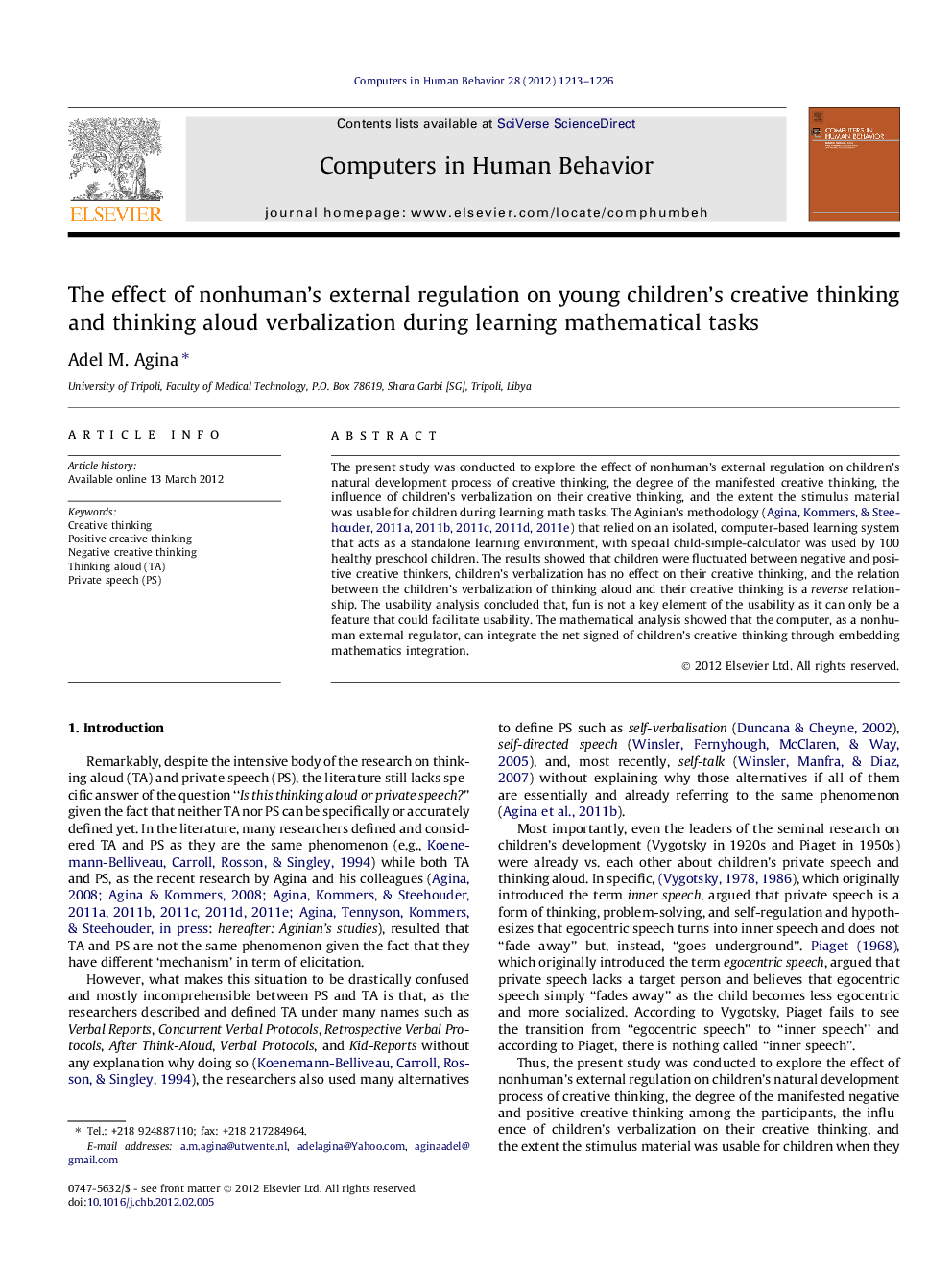| Article ID | Journal | Published Year | Pages | File Type |
|---|---|---|---|---|
| 351382 | Computers in Human Behavior | 2012 | 14 Pages |
The present study was conducted to explore the effect of nonhuman’s external regulation on children’s natural development process of creative thinking, the degree of the manifested creative thinking, the influence of children’s verbalization on their creative thinking, and the extent the stimulus material was usable for children during learning math tasks. The Aginian’s methodology (Agina et al., 2011a, Agina et al., 2011b, Agina et al., 2011c, Agina et al., 2011d and Agina et al., 2011e) that relied on an isolated, computer-based learning system that acts as a standalone learning environment, with special child-simple-calculator was used by 100 healthy preschool children. The results showed that children were fluctuated between negative and positive creative thinkers, children’s verbalization has no effect on their creative thinking, and the relation between the children’s verbalization of thinking aloud and their creative thinking is a reverse relationship. The usability analysis concluded that, fun is not a key element of the usability as it can only be a feature that could facilitate usability. The mathematical analysis showed that the computer, as a nonhuman external regulator, can integrate the net signed of children’s creative thinking through embedding mathematics integration.
► Children’s creative thinking (CCT) is fluctuated among two paradoxical sides. ► CCT and thinking aloud verbalization have a reverse relationship. ► Thinking aloud and private speech are not the same phenomenon. ► Thinking aloud must occur spontaneously without previous guidance. ► Computer can mathematically integrate the net signed of CCT.
